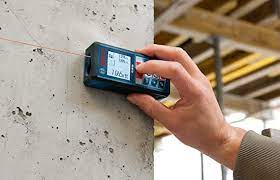Stainless steel appliances and surfaces are known for their sleek appearance and durability, but when rust appears, it can be a cause for concern. However, removing rust from stainless steel is a manageable task.
In this guide, we’ll explore simple and effective ways to get rid of rust and restore the shine to your stainless steel items.
Lets get right into it!
Table of contents
How does Rust form on Stainless Steel?
Rust on stainless steel, despite its name, occurs when the protective layer of chromium oxide on the surface is compromised. The simple explanation is-
#1. Chromium Oxide Layer:
Stainless steel contains chromium, and when exposed to oxygen in the air, it forms a thin, invisible layer called chromium oxide on the surface. This layer acts as a protective barrier, preventing further corrosion.
#2. Compromised Protective Layer:
When the chromium oxide layer is damaged or compromised, either due to physical damage, exposure to harsh chemicals, or contact with certain corrosive elements, the underlying steel becomes vulnerable to rusting.
#3. Formation of Iron Oxide (Rust):
The compromised stainless steel allows oxygen to react with the iron content in the steel. This reaction leads to the formation of iron oxide, commonly known as rust. Rust is a reddish-brown substance that weakens the structure of the stainless steel.
#4. Factors Contributing to Rust:
Several factors can contribute to the formation of rust on stainless steel, including exposure to salt (common in coastal areas), harsh chemicals, abrasive cleaning methods, and physical damage such as scratches or dents.
#5. Prevention and Maintenance:
Regular cleaning, avoiding abrasive cleaners, and promptly addressing scratches or damage can help maintain the integrity of the chromium oxide layer. Applying protective coatings like mineral oil or stainless steel polish creates a barrier that shields against environmental elements, reducing the risk of rust formation.
Check out: Top 24 inspirational sports movies of all Time
How to Get Rust Off Stainless Steel?
Removing rust from stainless steel can be accomplished using various techniques, often involving common household items. Here are different methods and how to use them:
#1. White Vinegar and Baking Soda:
Create a paste by mixing equal parts white vinegar and baking soda. Apply the paste to the rusted area, let it sit for a couple of hours, and then scrub with a non-abrasive sponge or cloth. Rinse thoroughly and wipe dry.
#2. Lemon Juice and Salt:
Sprinkle salt over the rusted area and squeeze lemon juice onto the salt until it forms a paste. Allow it to sit for a few hours, then scrub with a sponge or brush. Rinse and dry the stainless steel surface.
#3. Commercial Rust Removers:
There are various commercial rust removers available. Follow the product instructions carefully. Typically, you apply the rust remover to the affected area, let it sit for the recommended time, and then scrub or wipe away the rust.
See also: What Is PU Leather, and Is It the Real Deal?
#4. Stainless Steel Cleaners:
Specialized stainless steel cleaners are formulated to remove rust stains. Apply the cleaner according to the manufacturer’s instructions, usually by spraying or applying with a cloth. Wipe away the rust and cleaner residue.
#5. Vinegar Soak:
For smaller items, you can create a vinegar soak by submerging the rusted stainless steel in a bowl of white vinegar. Let it soak for a few hours or overnight, then scrub with a brush or sponge. Rinse and dry thoroughly.
#6. Stainless Steel Wool or Non-Abrasive Pad:
For tougher rust stains, use stainless steel wool or a non-abrasive pad. Wet the surface and gently scrub in the direction of the grain to avoid scratches. Rinse and wipe dry.
#7. Oil and a Soft Cloth:
After rust removal, apply a small amount of mineral oil or olive oil to the stainless steel surface. Buff with a soft cloth to create a protective layer that helps prevent future rusting.
#8. Prevention Measures:
Regularly clean stainless steel surfaces to prevent rust. Avoid using abrasive cleaners, steel wool, or harsh chemicals. If scratches occur, address them promptly to maintain the integrity of the protective chromium oxide layer.
Important Tips:
- Always test any cleaning method on a small, inconspicuous area first.
- Work with the grain of the stainless steel to minimize the risk of scratching.
- Rinse thoroughly and dry the stainless steel after using any cleaning method.
Choose the method that suits your preference and the severity of the rust. With proper care and timely maintenance, you can keep your stainless steel items free from rust and looking their best.
See also: How to Use a Coping Saw
How to Prevent Rust on Stainless Steel?
Preventing rust on stainless steel involves proactive measures to maintain the protective chromium oxide layer and shield the surface from corrosive elements. Here’s a guide on how to prevent rust on stainless steel:
Regular Cleaning:
Clean stainless steel surfaces regularly using a mild detergent and warm water. This helps remove contaminants and prevent the buildup of substances that can compromise the protective layer.
Avoid Abrasive Cleaners:
Steer clear of abrasive cleaners, steel wool, or harsh chemicals, as they can scratch the stainless steel surface and damage the protective chromium oxide layer.
Wipe Dry After Cleaning:
After cleaning, ensure the stainless steel is thoroughly dried with a soft, clean cloth. Standing water can contribute to the formation of rust.
Choose the Right Stainless Steel Alloy:
Different stainless steel alloys offer varying levels of corrosion resistance. In environments with higher risk factors, such as coastal areas with salt exposure, consider using stainless steel grades with enhanced corrosion resistance.
Ventilation in Enclosed Spaces:
Ensure proper ventilation in enclosed spaces, especially in areas with stainless steel appliances or surfaces. Good airflow helps reduce the risk of moisture accumulation, which can contribute to rust.
Regular Inspections:
Periodically inspect stainless steel items, particularly those exposed to harsh conditions. Look for signs of corrosion, scratches, or damage, and take corrective action as needed.
Check out: How Selling a House Works | What to Know Before Selling
Does Removing Rust Compromise the Stainless Steel’s Integrity?
Properly removing rust from stainless steel should not compromise its structural integrity. In fact, the removal process is typically focused on the surface and does not affect the core strength of the stainless steel.
When you remove rust from stainless steel, you are essentially restoring the surface to its original, corrosion-resistant state. Proper removal methods focus on eliminating the rust while preserving the underlying stainless steel.
It’s important to note that using abrasive materials or harsh chemicals during the rust removal process can potentially damage the protective layer or scratch the stainless steel surface. Therefore, it’s recommended to use non-abrasive methods and materials to ensure effective rust removal without compromising the stainless steel’s integrity.
Read also: How Smart Windows Work in Homes
Conclusion
Banishing rust from stainless steel is a straightforward process, and with the right techniques, you can keep your stainless steel items looking pristine.
Frequently Asked Questions
Despite its name, stainless steel is not entirely immune to rust. Rust on stainless steel can occur when the protective layer of chromium oxide is compromised, often due to exposure to harsh chemicals, salt, or physical damage.
No, using regular steel wool can cause further damage to the stainless steel surface. Opt for stainless steel wool or non-abrasive alternatives to avoid scratches while effectively removing rust.
Common household items like baking soda, vinegar, and lemon juice can be effective in removing rust. These natural acids and abrasives help break down rust without causing harm to the stainless steel.
Properly removing rust from stainless steel does not compromise its integrity. In fact, it helps restore the protective layer, preventing further rusting and maintaining the longevity of the material.
To prevent rust, regularly clean stainless steel surfaces and avoid using abrasive cleaners or steel wool. Apply a thin layer of mineral oil or a stainless steel polish to create a protective barrier against environmental factors.
References
- webstaurantstore.com– how to get rust off stainless steel
- home.howstuffworks.com- how to get rust off stainless steel
- thespruce.com– how to get rust off stainless steel
Recommendations
DISCLOSURE: This post may contain affiliate links, meaning when you click the links and make a purchase, we receive a commission.






1 comment
Comments are closed.